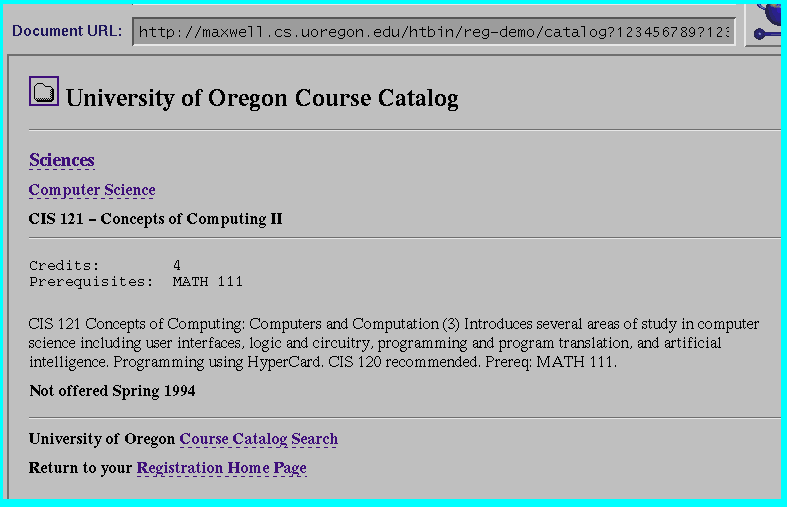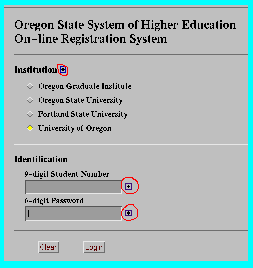
This page provides examples of our SE course. These show the types of components we used from the web to both present course material and to prototype an example system - an online course registration system implemented on the web. The example system, in particular, was used to generate student assignments, e.g., change the existing system, extend the existing system.
In the following figures, we describe pieces of the system as presented to
the student, and some of the course material made available as background
reading.
We maintained a simple database of students that were allowed to use the system (maintained in a separate Unix database). This is the page that greeted a student. The use of the circled boxes is to point to design rationale and is explained in more detail elsewhere.

The password information is carried along in the url, as can be seen
below (Mallard's student id is 123456789 and password is 123456).

We also maintained a database of the courses students were registered for (again, as a separate Unix database). Here we show the courses Mallard P. Duck has signed up for. We use a simple scolling table to show the courses. This table is built on the fly to reflect changes to the underlying database.
We also provide links to the course catalog, etc., and a
field to enter a course number to add/drop/etc.
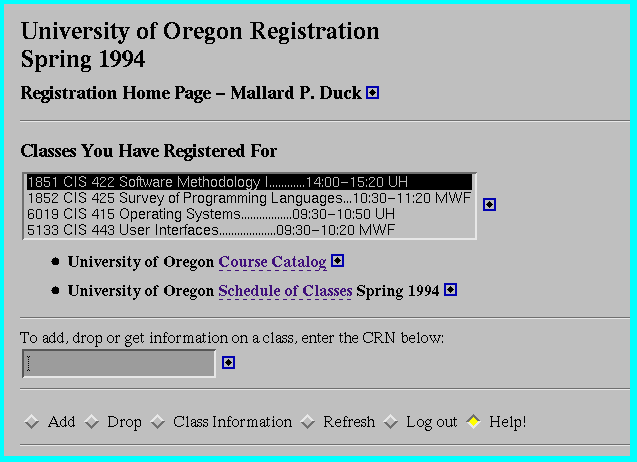
We chose to present the schedule planner in the hardcopy
version of the schedule of classes as a clickable image.
The user can see what classes have been filled in and
by clicking on a scheduled
class, the user can see a course description of that
class from the university course catalog. The user can also
find classes to fit holes (as noted on the page below).
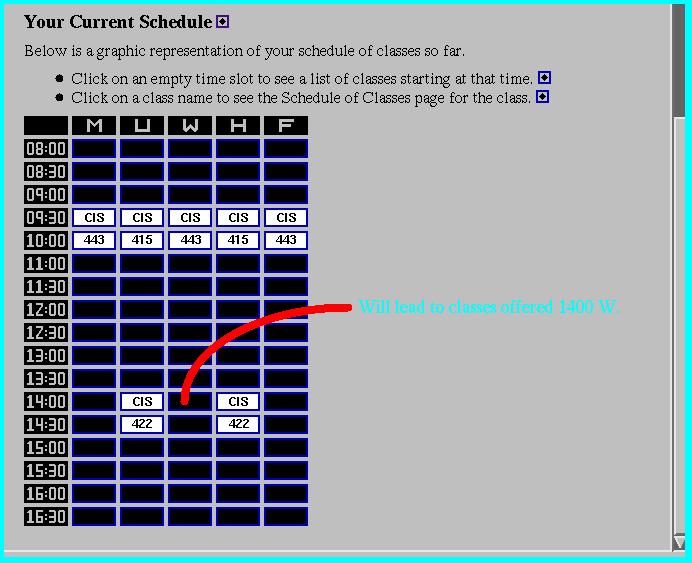
Related to the online schedule planner above, we scanned in the hardcopy version of the schedule of classes and the course planner. This was used as part of the rationale for having an online planner.
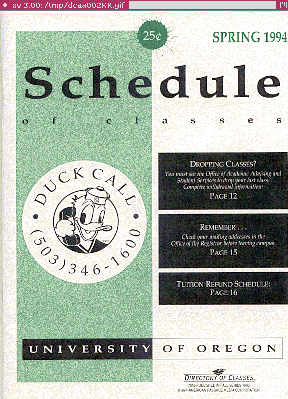
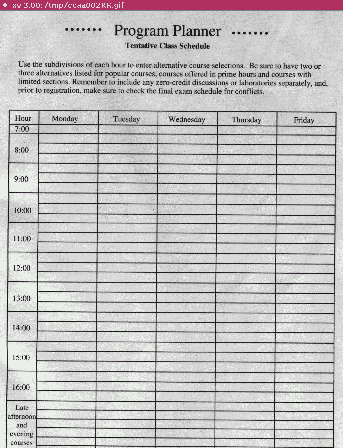
As part of the course, we gave our students indexed clips of interviews we conducted with other students who provided the requirements for an online registration system. As seen below, a course student can see the full video, audio only, or text transcript of an interview.
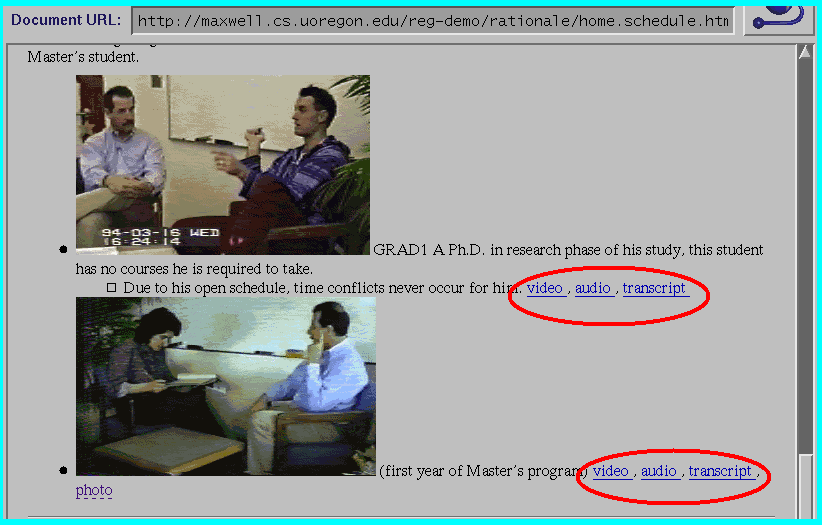
The video clips can also be accessed directly from the transcripts as shown below.

A simple database search engine was implemented for finding courses by keyword.
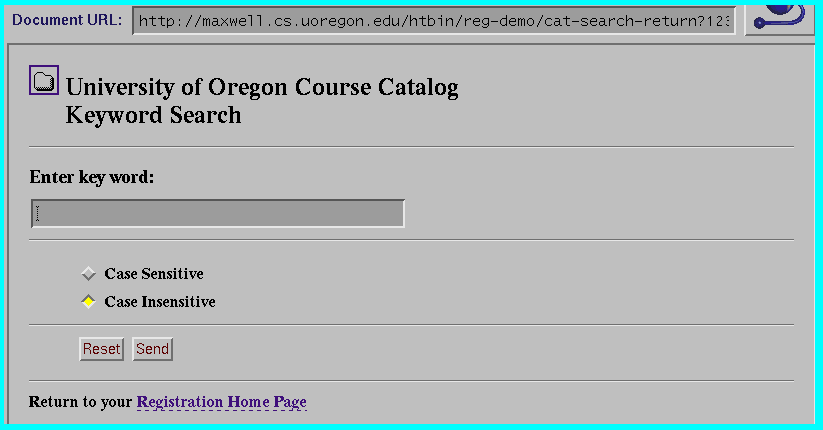
We provided students in the course with a rather mundane course description page (see below). From this, we generated student assignments to extend the page using multi-media components. For example, assuming a student was trying to decide whether to take the course, we generated exercises that asked for links to past syllabi, past exams, student evaluations, snippets of course lectures in a/v form, related courses, and finally, a self-evaluation test to determine if the student has the background for the course (we describe self-evaluation tests elsewhere).
